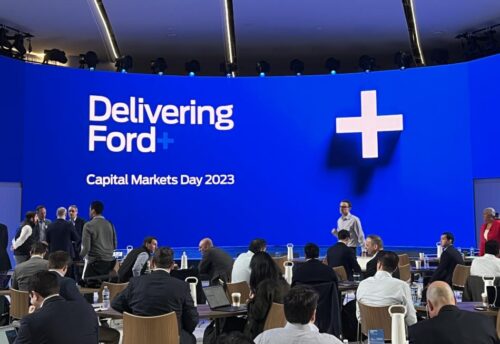
TECH STARTUPS PLAYBOOK IS DRIVING SUCCESS OF INNOVATIVE CONSUMER COMPANIES
The pace of innovation in Fast Moving Consumer Goods (FMCG) is increasing, helped by trends such as the increasing importance of millennials, changes in consumer preferences and the willingness of retailers to experiment. The result has been small players (less than $1B in sales) outperforming established brands in 18 of the top 25 Consumer Packaged Goods (CPG) categories. As the playing field levels, it is also getting more crowded and more competitive. This is a trend I’ve seen play out time and again in the tech startup landscape. To be successful in this new environment, the next generation of FMCG startups will need to adopt similar techniques and tools to those used by today’s tech startups in an effort to be more nimble, more efficient and more aggressive. This post highlights several of the most important areas where the ‘playbook’ that I’ve seen work for tech startups can drive success for consumer startups.
Leveraging Deep Science For Product Development
While consumer taste has moved towards authentic brands and natural products, that should not be confused with a neo-luddism in the FMCG space. Science can be an important enhancer / enabler for millennial-friendly concepts like sustainability and organic. While scientists have long been part of product development in the FMCG space, concepts like ‘big data’ and AI are relatively new and have the potential to change product development. Plenty is a vertical farming company that recently received over $200M in funding from SoftBank’s Vision Fund. Their solution leverages hundreds of cameras and thousands of sensors to take a data driven approach to farming. Another example is biosynthesis where companies like Arzeda are using machine learning to develop bio-based alternatives to artificial or unhealthy food products.
Agile Approach to Product Development and Iteration
‘Fast Fashion’ (shortened cycles from design to store rack) has been around for quite a while. Zara’s success as a pioneer of Fast Fashion brought this approach into the spotlight almost a decade ago. Now that trend is seeing broader adoption across the FMCG space. Food and beverage companies are increasingly using sales data and customer feedback to increase / decrease orders, change prices and even drive decisioning around new product development. Online purchases are still the source of the most efficient and clear customer feedback (everything from prices to quality of product is laid out in purchase volume, reviews, etc.). Large companies like Unilever and General Mills have employed ecommerce software like Clavis Insight or Profitero to optimize their “digital shelves.” They are now taking additional steps to translate those insights into a more strategic approach to product development. Amazon has been using a similar strategy to this as it developed private label products in the electronics and grocery spaces (and was also a big part of their Whole Foods strategy). Companies like NatureBox and Thrive Market were founded with an e-commerce first mindset and have had digital insights baked into their product strategy from day one (more on customer insights later). Old fashioned market surveys are also getting a makeover as companies like OnePulse make it quick, easy and affordable to reach out to target demographics and get instant answers to help better understand potential customers.
Technology Enabled Supply Chains Will Be More Transparent
While all supply chains move (or at least try to move) towards increased efficiency and speed, the next generation supply chain will be critical in adding transparency to manufacturing processes and traceability to food ingredients. Icebreaker was an early mover in transparent and ethical supply chains in the clothing and apparel space. Roughly 10 years ago they began putting in place deals with wool providers, cleaners, and spinning plants that ensured that all portions of their supply chain met the company’s commitment to core values like sustainability and environmentalism. They even introduced a “baacode” label that allowed consumers to trace the garment back to the original farm (and sheep – hence the “baa”). Similar concepts are now seen in the foods space with companies like Thrive Farmers coffee and Five Acre Farms. The logistics associated with transparent, local supply chains are extremely difficult. Just ask Chipotle. Their approach of using local vendors meant that they would typically have 30-40 suppliers for key ingredients as opposed to a small handful. And when the Company suffered an E coli outbreak, they struggled to quickly identify the source of the outbreak. Seafood is another area that is particularly difficult as large consumer brands struggle with sustainability and workforce issues. OSV (Orange Silicon Valley) and FS6 (Food System 6) did an excellent in depth piece on the issues here and Fast Company did an interesting piece on tech companies like HarvestMark and Frequentz trying to improve food traceability. The issue extends beyond food to manufacturing as well as companies like Nike and Ivanka Trump can attest to. In order to enable this next generation supply chain, FMCG companies will need to redesign supply chains, leveraging technologies like IoT, connected pallets and 3D printing for prototyping.
Communication and Activating The Community
Purpose Driven Brands (companies where ‘why’ is part of the corporate identity) represent some of the fastest growing and most important pieces of the consumer products space. And while Purpose Driven Brands typically have a higher costs of doing business, the return on this investment comes in the form of loyal, engaged customers who will act as evangelists for the brand. In order to capitalize on this however, successful brands must deliver a clear message that resonates with their core audience, and then activate that audience to share the message.
Annie’s Homegrown is an example of a company that very clearly delivered a message to consumers that resonated: healthy, sustainable food that you will feel good about giving to your kids. Their simple message became dramatically more powerful because their customers (health conscious mothers) were eager to share their positive experience with other potential customers. Rothy’s, the fast growing shoe company that was recently backed by Lightspeed was another great example. They target fashion forward, eco-conscious consumers and give them an easy to use incentive in the form of a discount code. While the concept is simple, their use of social marketing tools and retargeting are what makes it effective.
When you hear successful companies like Thrive Market talk about their key customers, they will typically refer to them as “a community.” While a strong messaging and branding strategy is critical, technology can be just as important in adding fuel to the fire. Social media can help activate these communities and give customers a chance to interact and bond. Social Marketing Management tools like Sprinklr and Hootsuite are important for understanding exactly how customers are interacting and what are the key drivers behind adoption. Omnichannel marketing tools like Marketo and Appboy can then help marketing teams scale the interactions that matter. Companies are further sharpening their marketing pencils to determine what individuals are key influencers in their social circles. Companies like Buzzoole have launched Influencer Marketing Platforms that are allowing companies like Ford, Nike and Amazon to reach customers that can generate authentic moments that influence others behavior.
While these powerful tools are already in the hands of agencies and established CPG companies, they aren’t always deployed effectively. A recent study of social marketing on WeChat (a popular Chinese social media site similar to Facebook) showed that poorly run social media campaigns can actually have a negative impact on brand and sales. Indiscriminate “blast” campaigns (think a banner ad that follows you around the internet for months after you visit a site) are easy to deploy but often ineffective. Compare that with a company like Purely Elizabeth the granola and cereal company that drew an investment from General Mills Corporate VC arm 301. Purely Elizabeth invested the time and money into high quality content that helped them engage rather than annoy. Because Purpose Driven Brands have something new and important to say to their users they have an inherent advantage over more established brands.
The next generation of FMCG promises to be an exciting one. The playing field is more level and allows startups to battle it out with established giants. The winners that emerge in this market will be the ones who have a compelling product or service and can leverage technology to get it to the right customers as quickly and efficiently as possible. We are already seeing the results: companies like Dollar Shave Club, Bai and Innocent Drinks that have growth rates and valuations that look more like tech companies than legacy consumer product companies.




Leave a Reply